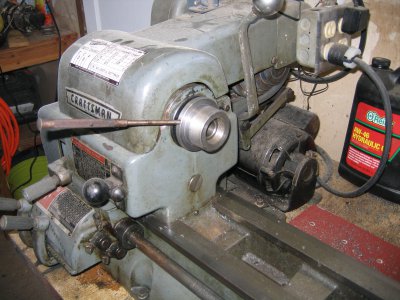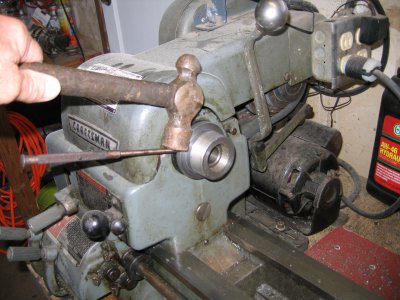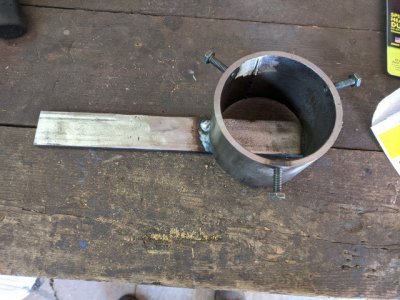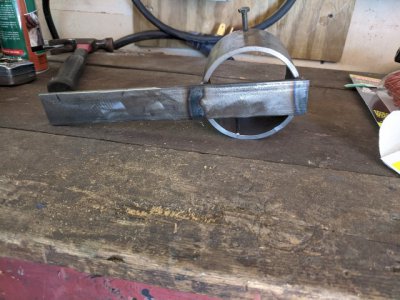- Joined
- May 9, 2020
- Messages
- 18
OK, so I am just about to head out into uncharted territory, and start my first simple project. I thought that I had pretty well figured out what I needed to do, but all came to a screeching halt. I want to turn part of a 1" piece of bar stock down so that it will look like an old fashion square head bolt. I'm so proud of myself knowing that I needed to change over to a 4 jaw chuck to turn square stock.  I removed the 3 jaw and prepared to install the 4 jaw when I discovered that the 3 jaw had a bigger threaded diameter than the 4 jaw. I looked among the many different parts that the previous owner included, and found the correct sized back plate. Problem is, the chuck has 4 mounting holes and the back plate only has 3! Upon further exploration, I see that there is an adapter on the head stock which I would assume if removed, would expose the correct diameter for the 4 jaw chuck. But I can't get it off!!
I removed the 3 jaw and prepared to install the 4 jaw when I discovered that the 3 jaw had a bigger threaded diameter than the 4 jaw. I looked among the many different parts that the previous owner included, and found the correct sized back plate. Problem is, the chuck has 4 mounting holes and the back plate only has 3! Upon further exploration, I see that there is an adapter on the head stock which I would assume if removed, would expose the correct diameter for the 4 jaw chuck. But I can't get it off!!  There are 3 holes drilled around the shoulder of the adapter that look like some sort of spanner wrench with round pegs might fit into. Am I on the right track? and how do I know what type of wrench to get?
There are 3 holes drilled around the shoulder of the adapter that look like some sort of spanner wrench with round pegs might fit into. Am I on the right track? and how do I know what type of wrench to get?
 I removed the 3 jaw and prepared to install the 4 jaw when I discovered that the 3 jaw had a bigger threaded diameter than the 4 jaw. I looked among the many different parts that the previous owner included, and found the correct sized back plate. Problem is, the chuck has 4 mounting holes and the back plate only has 3! Upon further exploration, I see that there is an adapter on the head stock which I would assume if removed, would expose the correct diameter for the 4 jaw chuck. But I can't get it off!!
I removed the 3 jaw and prepared to install the 4 jaw when I discovered that the 3 jaw had a bigger threaded diameter than the 4 jaw. I looked among the many different parts that the previous owner included, and found the correct sized back plate. Problem is, the chuck has 4 mounting holes and the back plate only has 3! Upon further exploration, I see that there is an adapter on the head stock which I would assume if removed, would expose the correct diameter for the 4 jaw chuck. But I can't get it off!!  There are 3 holes drilled around the shoulder of the adapter that look like some sort of spanner wrench with round pegs might fit into. Am I on the right track? and how do I know what type of wrench to get?
There are 3 holes drilled around the shoulder of the adapter that look like some sort of spanner wrench with round pegs might fit into. Am I on the right track? and how do I know what type of wrench to get?






